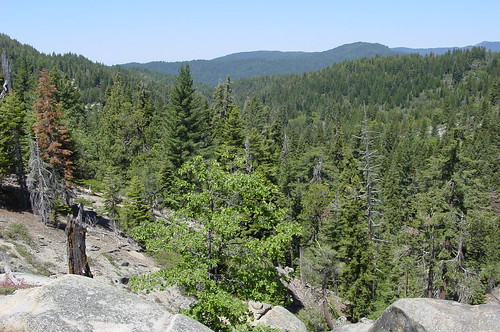QGIS screencasts help you get a jump start
 Monday, October 22, 2007 at 2:33PM
Monday, October 22, 2007 at 2:33PM  tim | in
tim | in  open source |
open source | geospatial matters
Please read the UC Berkeley Computer Use Policy. Only members can post comments on this blog.
 Monday, October 22, 2007 at 11:39AM
Monday, October 22, 2007 at 11:39AM Fire Information for Resource Management (FIRMS) at the University of Maryland is now offering KML to view MODIS Hotspot detections for the past 24 hours using Google Earth. Check out the Southern California fires that blew up this weekend. FIRMS KML link. Cheers, Josh
 Friday, October 19, 2007 at 12:35PM
Friday, October 19, 2007 at 12:35PM Spotted Owl in the news. I noticed this on the front page of the NYTimes webpage. (SNAMP)
 Monday, October 15, 2007 at 11:04PM
Monday, October 15, 2007 at 11:04PM  Thursday, October 11, 2007 at 11:53AM
Thursday, October 11, 2007 at 11:53AM  Monday, October 8, 2007 at 10:14PM
Monday, October 8, 2007 at 10:14PM  Thursday, October 4, 2007 at 1:54PM
Thursday, October 4, 2007 at 1:54PM  Tuesday, October 2, 2007 at 1:50AM
Tuesday, October 2, 2007 at 1:50AM |
Science 14 September 2007: Vol. 317. no. 5844, p. 1481 DOI: 10.1126/science.317.5844.148 |
 Saturday, September 29, 2007 at 1:20PM
Saturday, September 29, 2007 at 1:20PM I guess they're not just looking for lost hikers anymore..... Cheers, Josh  By Yudhijit Bhattacharjee ScienceNOW Daily News 29 September 2007 The military dictatorship of Myanmar--also known as Burma--has consistently dismissed allegations of human-rights violations against ethnic minorities and other citizens. But new satellite images that show the charred remains of villages in east Myanmar and a buildup of refugees across the country's border with Thailand provide silent confirmation of those atrocities. Read more...
By Yudhijit Bhattacharjee ScienceNOW Daily News 29 September 2007 The military dictatorship of Myanmar--also known as Burma--has consistently dismissed allegations of human-rights violations against ethnic minorities and other citizens. But new satellite images that show the charred remains of villages in east Myanmar and a buildup of refugees across the country's border with Thailand provide silent confirmation of those atrocities. Read more...
 Friday, September 28, 2007 at 1:37PM
Friday, September 28, 2007 at 1:37PM  Overlooking the southern site, originally uploaded by SNAMP Photo Collector.
Overlooking the southern site, originally uploaded by SNAMP Photo Collector.Another lovely view of the SNAMP site - this one in the south